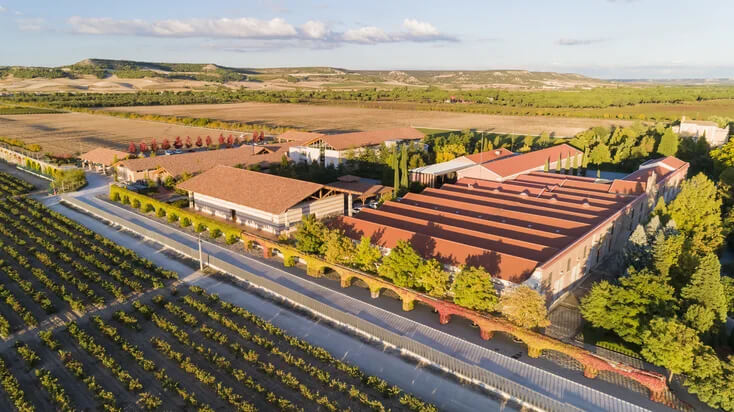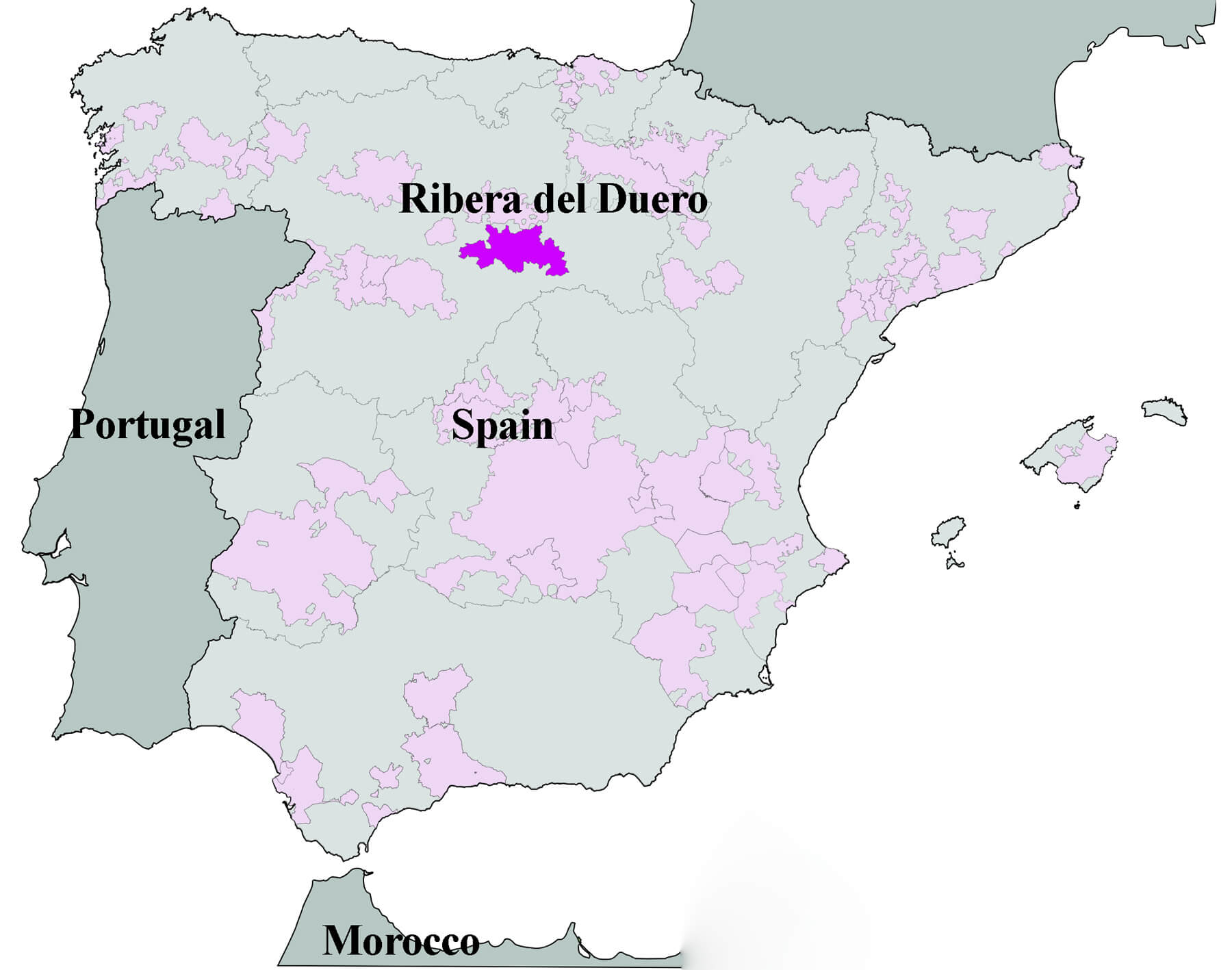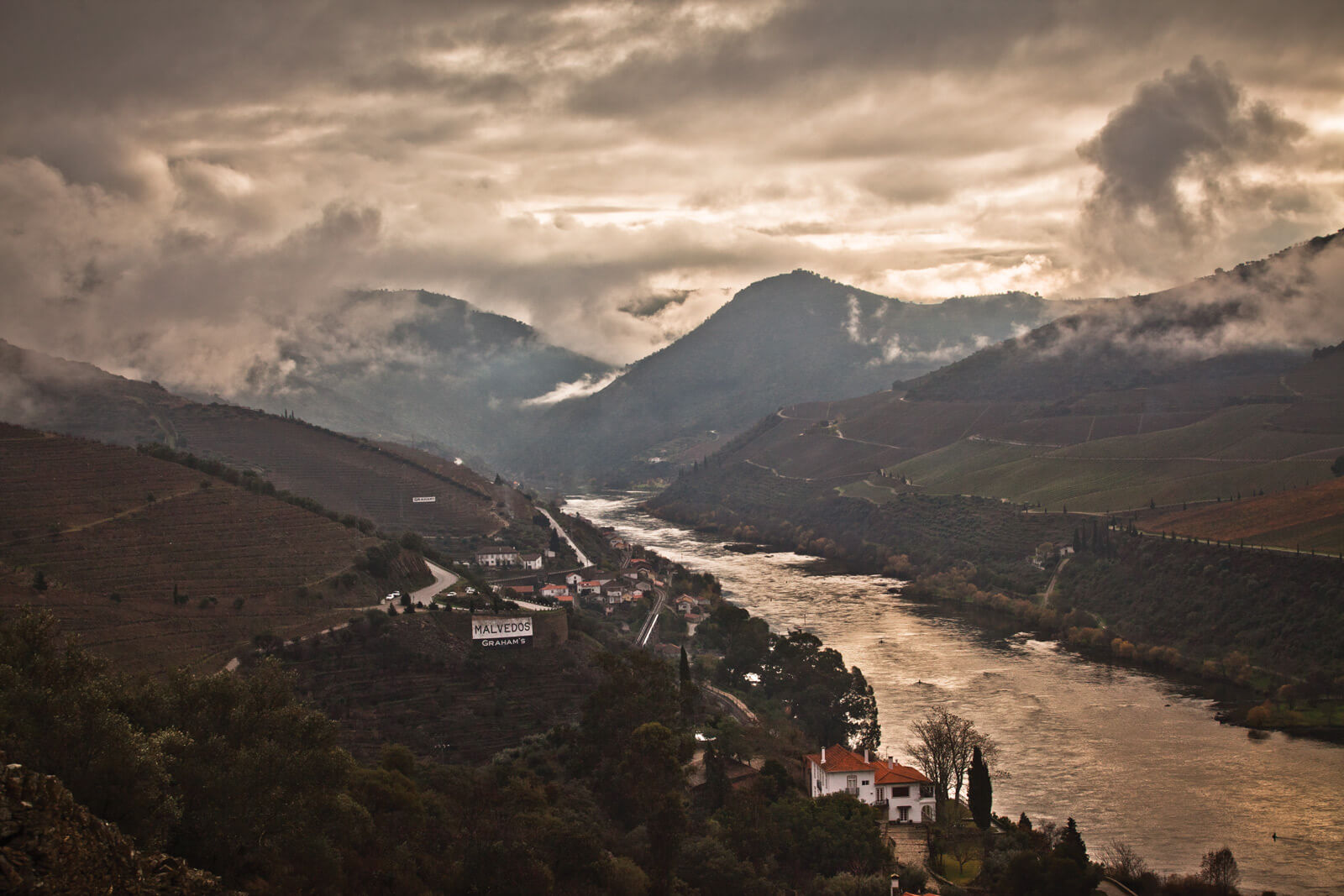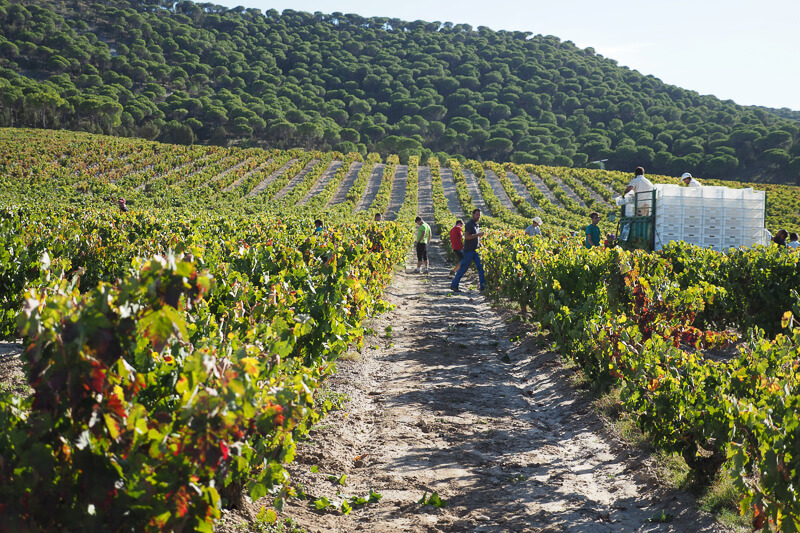Vega Sicilia Spanish Wines: Still Wearing the Crown in Spanish Wines
by Ken Gargett
One Spanish estate stands above all others in the world of fine wine (okay, we are putting Sherry to one side here as that is an entirely different debate).
Many years ago, the famous British wine scribe, Hugh Johnson, described Penfolds Grange Hermitage (as it was then – the Hermitage was dropped from the name with the 1990, although it has been suggested that their mindboggling collaborative new wine, a 50/50 blend with Jaboulet, is a back door way of getting it back. I think not) as the southern hemisphere’s First Growth.

Vega Sicilia winery (photo courtesy www.wine-searcher.com)
I think most people thought the same way about Vega Sicilia and their Unico, although even throughout the 1980s and 1990s, many seemed to think of it as more of a curio than the great wine it was. In those days, exports went to a tiny handful of countries (fortunately, Australia was one), but today, that number is closer to 150, which suggests that perhaps it is finally receiving the respect and recognition it deserves.
Vega is located in Ribera del Duero region, which is around two hours to the north of Madrid. No one is quite sure of the reason for the name, Vega Sicilia, but it is believed to relate to the Catholic saint, Saint Cecilia, the patron saint of musicians. Another theory is that a person called Cecilia owned the land many years before it became a famed wine estate.
Vega is the name for the green vegetation and fertile plains on the banks of the River Duero (when the Duero crosses the border into Portugal, it becomes the Douro, famous for its crucial role in the Port industry).
That is not to say that there were not plenty of good reds available from Spain, especially from Rioja, but Vega Sicilia was on a pedestal of which others could only dream.
Today, there are a great many wonderful wines from the country – especially regions like Rioja, Ribera and Priorat – but while Vega Sicilia has challengers, it still holds the crown.
The problem is that we rarely see it – rare and expensive is not conducive to regular sightings.
Vega Sicilia is also a little bit different – walks to the beat of different castanets, if that is your thing. It is the only one of the world’s great estates to regularly include a non-vintage red in the premium portfolio – Penfolds dabbled with their G3, G4 and G5 in recent years, but that has now been shelved for the moment as the experiment came to an end (a very successful end, but it was only ever intended as a one-off, or three-off if you prefer).
Vega has several different wines and wineries as part of the overall empire. We’ll get to all that.
Vega Sicilia is a winery with a long history, dating back to 1864. In fact, Don Eloy Lecanda y Chaves was given the property by his father in 1859. It was in 1864 that he went to France and returned with 18,000 cuttings of Cabernet Sauvignon, Malbec and Merlot and even some Carmenere and Pinot Noir, although the latter two are no longer in existence at the estate. In the early days, both wine and brandy were made here, the brandy perhaps more successfully.
Don Eloy Lecanda y Chaves had trained in Bordeaux, and was supported by a number of Bordeaux winemakers who had moved to Spain following the phylloxera disaster in the region. Alongside Tempranillo, he planted those French varieties (to the shock of many locals). At that time, the estate was not yet known as Vega Sicilia.
Antonio Herrero and his brothers purchased the estate in 1888 and until 1903, it was known as Bodegas de Lecanda. Wine now took priority, but up until around the beginning of the First World War, when new management took over, most of the wine produced was sold in bulk, and much of that to Rioja.
At that time, the estate was leased to a Rioja producer, Cosme Palacio, who defined the style for its wine for the years to come. The estate was sold in 1952 and again in 1966, before the Alvarez family took over in 1982.
Vega was a little bit of an oddity in that when we think of the most famous Spanish red region, thoughts inevitably turn to Rioja. But, as noted, Vega is not from there. It is from a region which has now achieved the fame that is its due, Ribera del Duero.

Ribera del Duero wine growing region in Northern Spain (map courtesy Wikipedia Commons)
This is largely a red wine producing region with a continental climate. Tempranillo (Tinto Fino) dominates, with some Garnacha and with international varieties such as Cabernet and Merlot.
1982 was the watershed year for this estate. Pablo Alvarez, a Bilbao-based lawyer, and his family purchased Vega and finally, the Ribera del Duero region was granted DO (Denominación de Origen) status – it is a little surprising that this status has not been upgraded to denominación de origen calificada. In 1982, there were only nine wineries in the region.
If that seems a little astonishing, up until 1927, Vega Sicilia was literally on its own. We have seen many fine producers subsequently join Vega in the region, including names like Pesquera, Cillar de Silos, Valdubon and Pingus, among many others. Today, there are closer to 300 wineries. There are also close to 10,000 growers in the region.
The property is still in the hands of the Alvarez family and the empire has expanded to include several other Spanish estates and even includes a winery in Hungary (Tokaji). The family has invested heavily in Vega and all wineries in the empire to ensure that the wine quality, across the board, is better than ever.
The wines are known for their ability to age magnificently. A friend opened the 1921 Unico a year or so ago – not long after it celebrated its century. It was early days in the production of this wine, as the first Unico ever released was the 1915. There were still appealing, if lingering, notes of red fruits and florals, with grip, but it had certainly started to lose some focus and was a little tired.
The earthy and animal notes were a little more dominant. Hardly surprising, but it was still in better condition than we might have hoped for, for a wine of that age. Perhaps the century was a bridge too far. Still, at that age, individual bottles will perform at varying levels and this is a wine known to age along with the best of them. It is often compared to Latour, in that sense.
The Alvarez family purchasing the estate was far from a complete disassociation with the past. Mariano Garcia was the winemaker from 1966 to 1996. His father worked at the estate in the years prior to that. Wineries with their own cooperages are very rare – for example, the southern hemisphere has only one, Yalumba – and Vega is one of them.
It has been owned and run by the same family for four generations. After Garcia, Javier Ausàs took the winemaking reins and, since 2015, it has been Gonzalo Iturriaga.
For many years, as mentioned, Vega was the sole winery in the Ribera
region, although Benedictine monks had been making wine there centuries earlier. These days, the region is well over 22,000 hectares. Ribera is one of the eleven defined winemaking districts in the Castile and Leon community.

The Douro river in Northern Portugal
It is also one of several regions along the Duero/Douro River, which enters the Atlantic after going through Portugal. The most famous of these is surely the Port producing district in that country.
The average height above sea level in the Ribera region moves between 700 and 1,000 metres. 323 hectares are vines which are over a century in age. The region can see a wide diurnal variation with great heat in the day and extreme cold at night.”
Despite the rather mixed fruit salad-like array of varieties at Vega, around 95% of the grapes in the region are Tempranillo, known locally as Tinto Fino. For a wine to qualify for the regional classification, it must be at least 75% Tempranillo. Garnacha is becoming a little more popular, and the international red varieties are limited to a maximum of 25%.
Unico certainly had a much higher percentage of Cabernet, as well as Merlot and Malbec, in years gone by. Today, it is around 5 to 7% but it seems that may reduce even further. It also occasionally had a dribble of Albillo, a local white variety.
The region has the same categories for its wines as other Spanish districts, with Cosecha, Crianza, Riserva and Gran Riserva.
The Vega/Alvarez empire has as its flagship, Vega Sicilia. Winemaking for their premium red, Unico, has changed little over the years and the wine is only released after ten years.

Vega Sicilia wine vats (photo courtesy www.vinello.eu)
Storage will vary slightly but is likely to be along the lines of twelve to eighteen months in 200,000 litre vats, two years in new oak barrels, another year and a half in older barrels, a further couple of years in large oak vats and then a spell in bottle. Wild yeast fermentation takes place in oak.
Unico hails from the more elevated vineyards on the estate. It is not made every year. It seems that around twice a decade, conditions are not considered good enough. They are good years to chase the Valbuena n°5, which is where the Unico grapes will find themselves, if no Unico is made.
The ten- year rule is not set in stone, although you rarely find Unico
released any earlier than that.
For example, some releases are held for considerably longer. In 1991 (a great vintage for them), they released both the 1982 and 1968, deeming them both ready at that stage (and not before).
The 1970, considered a classic, saw sixteen years in oak before release. Looking back, the 1991 was indeed special, but for me, it was surpassed by the 1994, an absolute classic.
This also means that the wines are not necessarily released in chronological order, something very rarely seen elsewhere – a few champagne producers have done this on rare occasions, such as when the amazing 2008s demanded more time in the cellar and the welcoming 2009s were showing their glories at an earlier stage.
As well as Unico, Spanish for unique, they offer a more affordable wine (yes, everything is relative) in Valbuena n°5, which spends a total of five years in barrel and bottle (two in barrel and three in bottle) before release, and the very rare, and very expensive, Unico Reserva Especial.

Vega Sicilia Valbuena No. 5
Valbuena No. 5 is Tempranillo dominant, but may include a small percentage of Merlot. There was a Valbuena n°3, but in the late 1980s, as they looked for a project that became Alion, they dropped it. It is not uncommon to find examples of that wine from the 1980s in winelovers’ cellars, and as a discontinued wine, it is coveted by collectors when it appears at auction.

Vega Sicilia Oremus Late Harvest
Outside this, we have Pintia from Toro and Macán and Macán Clásico, from Rioja. Oremus is their winery in Hungary, making both dry Furmint and Tokay. It was established in 1993.

Vega Sicilia Unico Reserva Especial
Unico Reserva Especial is something which is almost unique in the world of wine – a first class, premium red which is a blend of vintages. The only other leading winery that I can think of as doing something similar was the trio of G wines from Penfolds, but this was always intended to be limited to the three releases, G3, G4 and G5 (a blend of three, four and five vintages of Grange respectively).
Especial is a blend of three vintages, and they do not have to be consecutive (usually, they are reasonably close, but they have been known to be decades apart), which then spends a considerable time, up to ten years, in barrel and bottle before release, longer if the winemaker deems it necessary. Maturation is in a mix of new and older French and American oak barrels, and also 20,000 litre tanks.
Alion is situated next door to Vega Sicilia and was purchased by the family in 1991. The wine is 100% Tempranillo and usually spends around a year in new French oak – up until 2014, this was 100% new but is now closer to 80%.
I remember buying magnums of one of the very first releases, before word of its quality spread too far and the price shifted north. I’ll happily confess I knew absolutely nothing about the wine at the time and internet searching was not as easy and sophisticated as it is today, but I figured, if Vega had anything to do with it, odds on it would be special.
For once, I was spot on. They were stunning stuff. I remember the freshness and elegance of the wines.

Pintia 2018
A further project, Pintia, was established in Toro in 1997, first vintage 2001. Years ago, the Brisbane Hilton held an annual Masterclass weekend, food and wine, with famous names from both spheres from around the globe. Part of my responsibility (as an unpaid committee member) was to recommend wineries.
In 2006, we enticed Vega Sicilia to attend, which was a huge coup (they were in good company as we had everyone from Latour to Pol Roger to DRC over the years). One of the wines they showed was their brand new Pintia, the 2001. It made a real impact.

Macán 2018
Macán is a joint venture between Vega and Benjamin de Rothschild, established in 2013, a few years before de Rothschild passed away, far too early in his 50s, although the concept was conceived several years prior to that. At the time, he was also the largest shareholder in Chateau Lafite Rothschild.
They release two wines, Macán and Macán Clásico. Macán is considered to be the ‘Grand Vin’, while Macán Clásico is the second wine (cracking stuff for a second wine). Macán sees around sixteen to eighteen months in oak, while Macán Clásico sees a touch less, usually around the twelve to fourteen months.
Next, and most recently, a white wine project. Deiva in Rías Baixas, where they will work with the Albariño variety. The aim is to create a first class white, which can sit on a par with the great white Burgundies. The intention is to release the first 30,000 bottles in 2027, but eventually to expand this to 300,000.

Vega Sicilia vineyards (photo courtesy www.wineanorak.com)
The estate at Vega Sicilia is around 1,000 hectares, but only just over 200 hectares are used for wine production. The team has divided these into 19 discrete soil types, and further, into 52 plots (or 56 or 62, depending on which source of information one uses), which are all kept separate, at least to begin with. Only 70 hectares at the estate qualify for Unico.
In case readers may think that, as usual, I have got a bit excited about all this, Winesearcher has just released its top ten list of Most Wanted Spanish Wines for 2025. It is no surprise that Unico is No 1 (indeed, it would be a surprise if it was not). Pingus, mentioned above, is second, with Valbuena n°5 in third place. Alion is 7th.
This is an extraordinary achievement. Three wines in the top seven! Especial does not make it but this is surely because of its rarified status that one suspects many don’t even try to find it.
Anyone doubting the drive for quality need only look at Pablo Alvarez’s decision to recall the entire production of 1994 Valbuena because of cork issues. They have planted 50,000 cork trees to try and avoid such problems in future, although the production of cork is a slow process
Even though they were planted nearly two decades ago, it will still be
another eight years before they can harvest their first crop. Think also
about the extensive period before the Estate releases the wines. Few
wineries can afford to carry the cost of something like this.
Of course, the wines are anything but cheap, and they would no doubt sell just as well if released a little earlier. But that is not the Vega Sicilia
way.
A look at some of the wines (prices will vary around the world – these are approximate prices for Australia in Aussie dollars, USD and euros are around 2/3s of these prices):Macán Clásico 2019 ($125) – This is a cracking Rioja and while things may change over time, at the moment, I found this to be brilliant drinking and would probably chose it over the Macán 2018, if opening a bottle tonight. That may be partly because 2019 is considered a superb vintage. 2018 is a good year but not quite the same level.
The nose gives us spices, delicatessen meats, dark red fruits, herbs, leather, soy and aniseed. Perfumed and elegant with a supple texture and fine yet firm tannins. There is also an intriguing meaty note here. A wine of focus and a lingering finish. 93.
Macán 2018 ($200) – Like the Clásico, this is 100% Tempranillo. A wine with a long and promising future ahead, the nose is exhibiting notes of cassis, smoked meats, blackcurrants and chocolate, but it is that gorgeous cassis character that really is to the fore. Second use French oak is employed here.
With time in the glass, notes of kid leather and cloves emerge. A firm finish, the abundant tannins provide serious grip. There is more complexity here. It is a ten-year proposition. When production reaches full steam, the team are aiming at 100,000 bottles of this wine annually. 94.
Pintia 2018 ($180) – Toro is perhaps not the first region one thinks of when considering elegance, but for this 100% Tempranillo gem (with 2020 and 2021, small amounts of Garnacha have been incorporated, as the team believe that this will increase freshness and elegance), that is certainly the direction.
The use of oak is also being reduced here, just a year in second use. There are notes of red cherries, dried herbs, bergamot, milk chocolate, dried herbs, spices, raspberries and on the finish, some sour cherry characters. A silky texture, but there is underlying power. Fresh, focused and of medium length, this will provide pleasure for at least the next half dozen years, likely longer. 93.
Valbuena n°5 2019 ($450) – A nose of tobacco leaves, spices, hints of plums, dried herbs, raspberries and tomato bushes, this vintage is 94% Tempranillo and 6% Merlot. There are notes of chocolate, mint, cherries and cassis. There is already good complexity evident and it offers a lingering finish with sleek tannins and fine balance. It should drink beautifully for at least the next eight to twelve years. 94.

Vega Sicilia Unico 2014
Unico 2014 ($1,200) – This vintage is 94% Tempranillo and 6% Cabernet Sauvignon. The nose reveals a glorious array of flavours – chocolate, cassis, mulberries, earthy notes, tobacco leaves, spices, licorice, dried herbs, soy, mint and cloves. Wonderful complexity here. A powerful and yet elegant wine, it is exquisitely balanced with great length, finishing with the silkiest of tannins.
It sees time in both American and French oak barrels of varying size, the
American oak imported from Tennessee and/or Missouri, and turned into barrels by the estate coopers. This is a twenty-year wine and will go longer than that in good cellars. Cracking stuff. A wine which combines the finesse of the finest matador with the power of the bull. 98.

Vega Sicilia Unico 2012
Unico 2012 ($1,200 – for Reserva Especial, anticipate around $1,800) – Another superb version of Unico, this is a little more savoury at this stage, but also with endless complexity. The nose has notes of animal skins, raspberries, dry herbs, spices, bergamot, black cherries, plums, leather, florals, woodsmoke and beefstock.
Ever such fine tannins, on a very long finish, the wine exhibits immaculate balance, a fine line of acidity and an intensity that never waivers. Fifteen to twenty years, as a starting point. 97.
For more information, please visit www.temposvegasicilia.com/
You can follow more of Ken Gargett’s reviews at www.kenfessions.com
You might also enjoy:
Alta Pavina Citius Pinot Noir: A Spanish Wine Revelation



Leave a Reply
Want to join the discussion?Feel free to contribute!